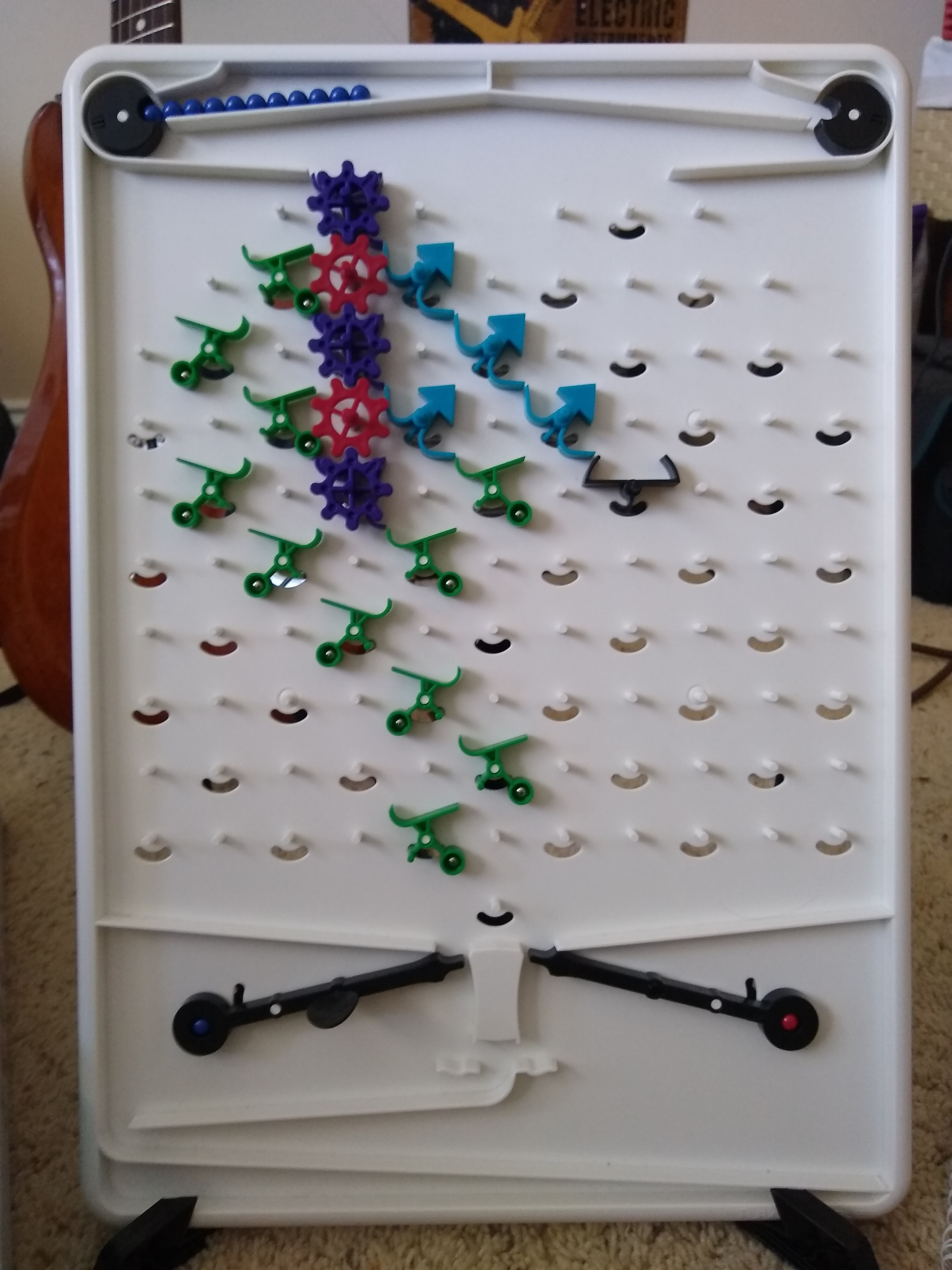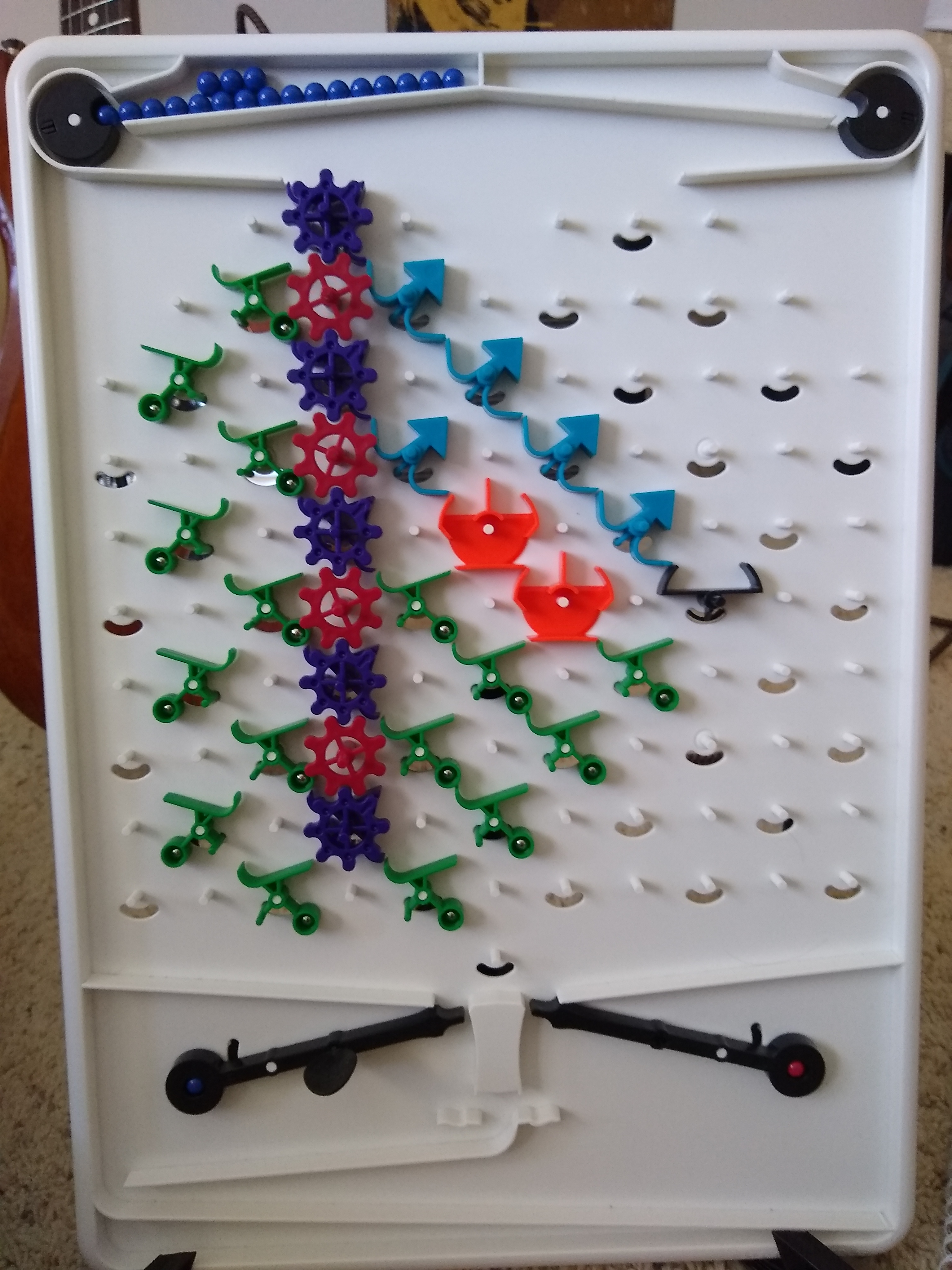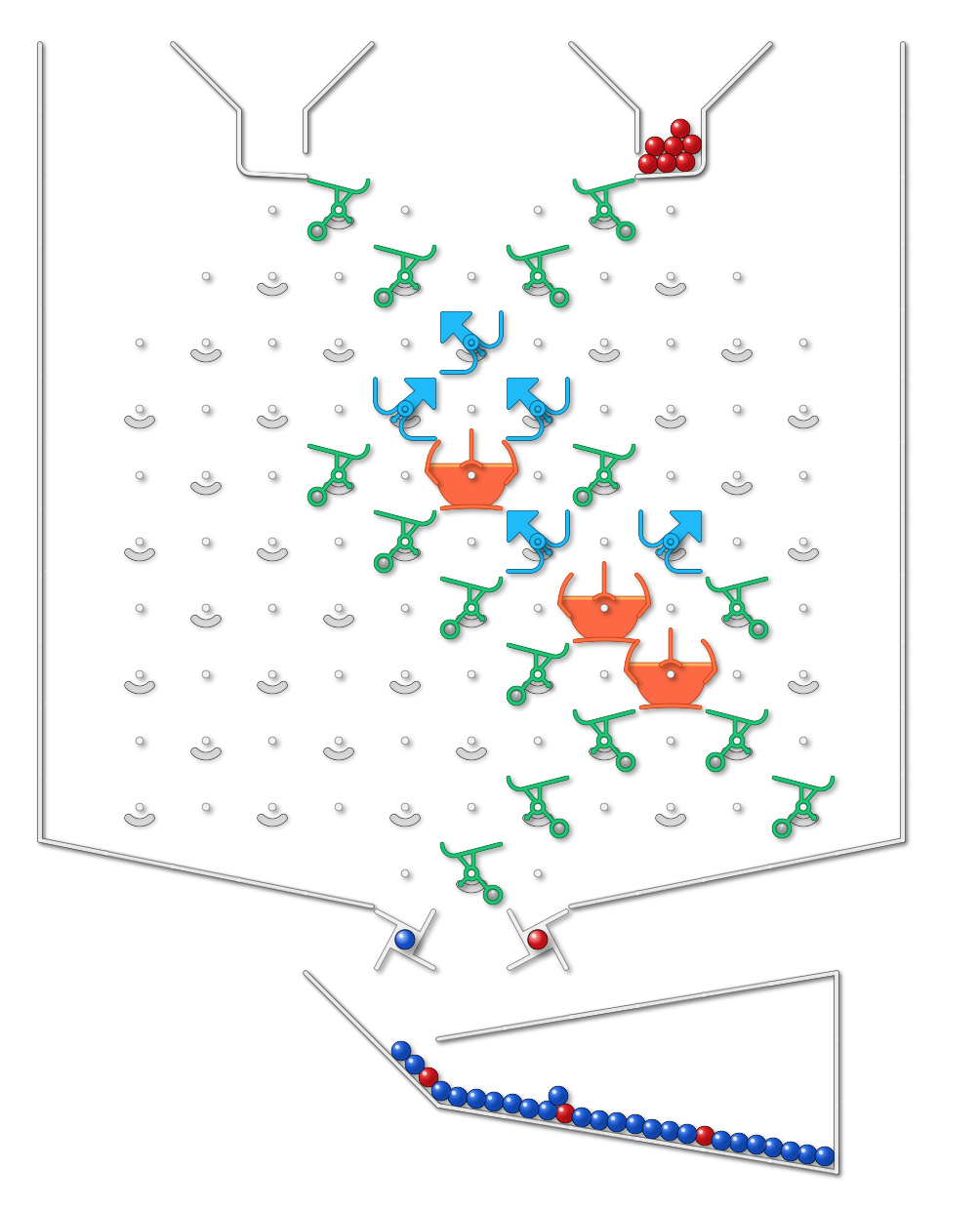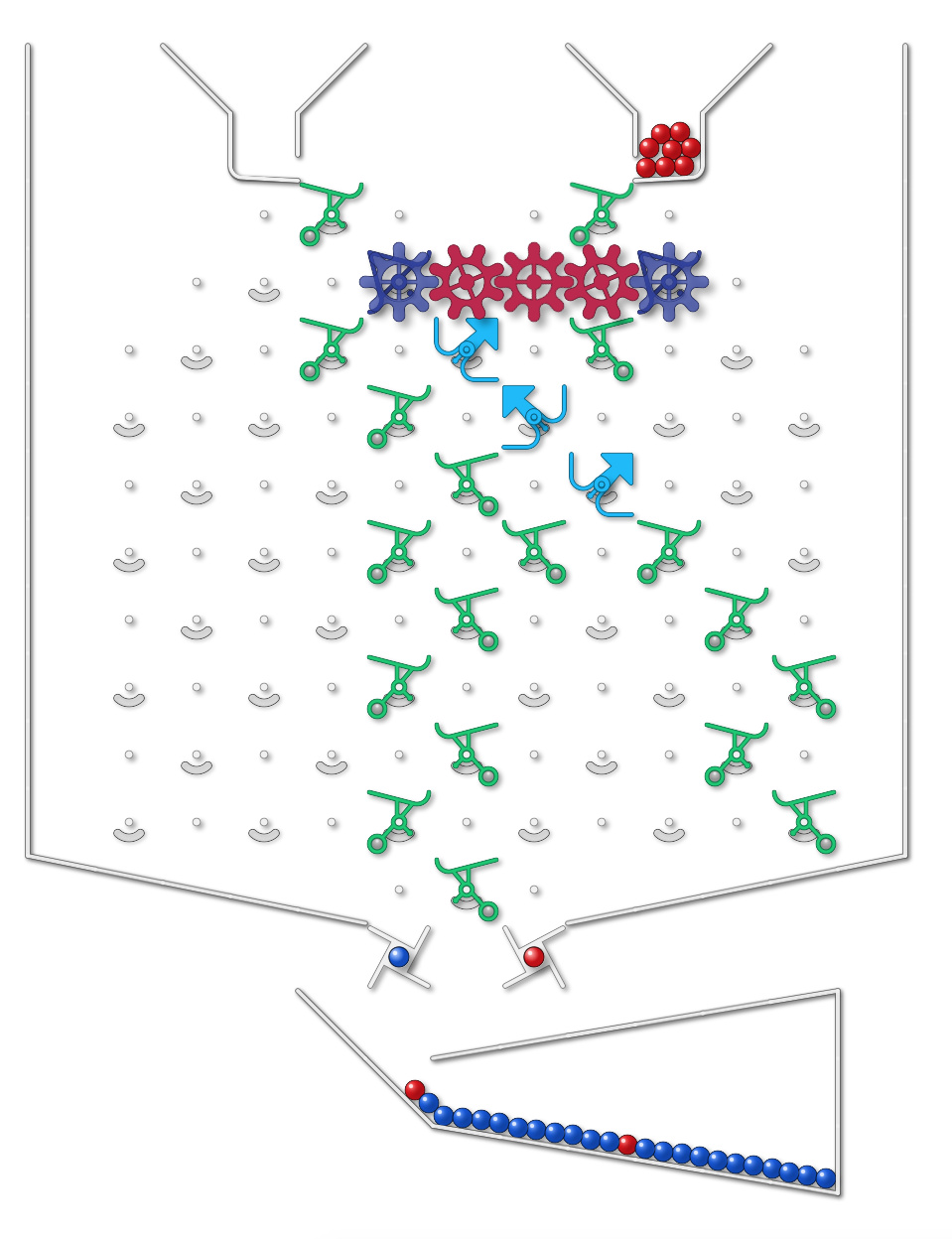My inspiration for this came from puzzle 39 in the book called “Triplets”, where you make a board that forms the pattern BBBRBBBR…etc., with each set of three blue balls being separated one red ball. I began to wonder if this challenge could be done in a similar way except with sets of four, five, six, or even more blue balls.
The main goal of this challenge is to dispense a certain amount of balls before catching the last one in the interceptor. In this case, start with seven balls of the same color, and let the first six pass through so that the seventh ball gets caught in the interceptor. The only condition to this challenge is that it must be repeatable. In other words, any bits or gear bits placed on the board must be facing in the same direction as they started when the seventh ball reaches the interceptor, with the interceptor acting as a stand-in for dropping a red ball to activate the blue lever again (thus continuing the pattern). Feel free to use as many pieces needed from the standard set to accomplish this.
For those confused, here’s what the original triplets challenge would look like by these rules:
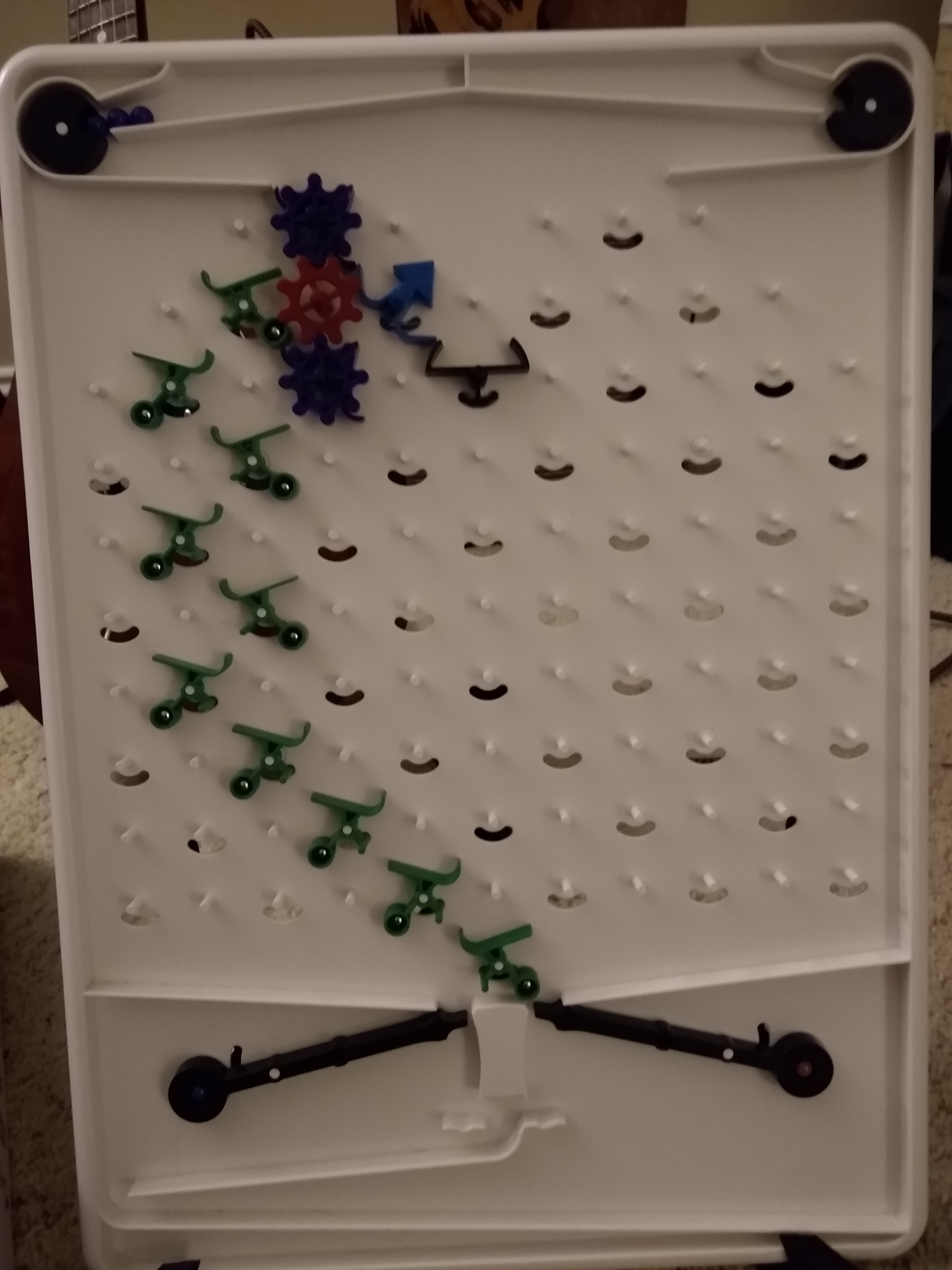
And here’s my solution for 7 balls in spoilers, though it may not be the most efficient. If anyone comes up with a simpler board, then please do share!
Summary
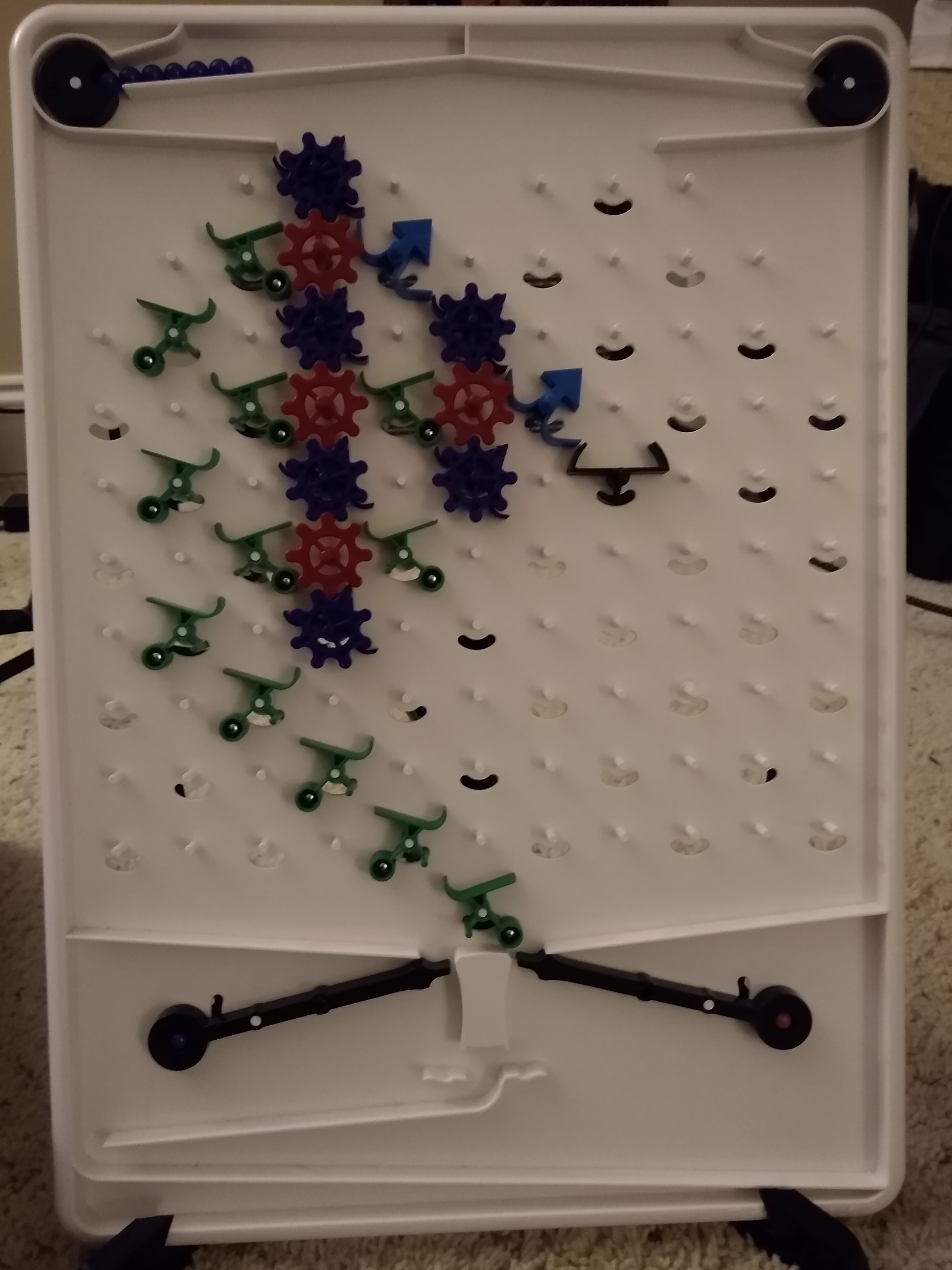
One last thing I want to bring up: I’ve tried this challenge with even larger numbers of balls, going all the way up to 20. So far I’ve found solutions for every number of balls except for 11, 13, and 19. I’ve figured out solutions in theory for these, but either the board is too small, there aren’t enough pieces, or both. If anyone can find more efficient solutions so that it operates using the pieces found in only the standard set, call me impressed, and as before feel free to share! Thanks for reading this lengthy post of mine, and happy solving!
